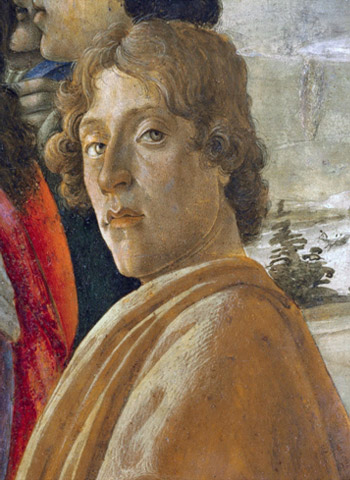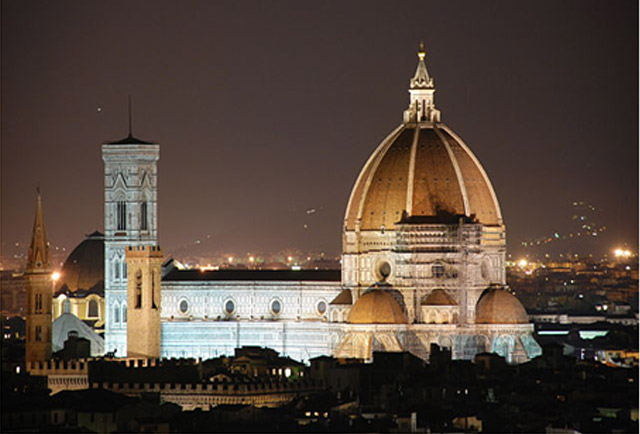The era shifts to the arts and literature of ancient Greece and Rome. Creativity and imagination bring achievements. Humanist scholars concerned about mankind are exalted. Painters begin to use worldly images in their work. Literacy among the secular world begins when the printing press is invented in Europe in the 15th century. North America is a beneficiary. See the recreated Gutenberg printing press at The International Printing Museum.
Sandro Botticelli (1445 -1510) Young Botticelli blossoms under Filippo Lippi, a Florentine Master, and true Renaissance personality, whose life and art pitch between religion, and a passion for this world. Entrepreneurship beckons and subsequently, he opens a studio.
Enter Lorenzo, "the Magnificent," the young heir to the House de Medici, the unofficial rulers of Florence.
These powerhouse patrons of the arts have connections in high places. In Rome, Pope Sixtus IV is finishing his Sistine Chapel, built between two wings of the Vatican Palace. He commissions Sandro and others to paint the story of Moses on its ceiling.
Years later, Botticelli returns to Florence as it succumbs to changes, sadly his star power dims. And, to think the master was once on an esteemed committee, of artists and leading citizens, who decided the placement of Michelangelo's immortal sculpture, of David.

Italian, Early Renaissance (c.1400-90) replaces the stagnation of the Medieval era. The Medici Family dominates Florence for centuries, earning their money as the Popes’ bankers, collecting taxes, and lending it to crown heads of Europe.
Two family members, Leo X and Clement VII become Popes.
The benefactor opens his palace to the intelligentsia and the humanists who share their idealized views with Botticelli. Scroll down to see the bust of the influential Lorenzo deMedici on Slide 15.6.
Dominican Friar, and reformer, Savonarola, riles at Humanists' influence. In a moment of wild behavior, he orders a bonfire of masterpieces he describes as "pagan" paintings.
The family hears of the plan and rushes The Birth of Venus to a secret place to spare her the horror that lights the sky, in the center of Florence.
Go on to Describe, Analyze, Interpret & Conclude. Contact me for help.

The Birth of Venus (c.1484 - 86. Edited. Tempera on canvas. 68 x 110 in. (280 x 180 cm.) is the first example of a work of art painted on canvas in Tuscany, a region, in central Italy. Typically, artists painted on wood.
Magic happens when Botticelli is inspired by his contemporary, the greatest Neoplatonic poet of the Medici court and Lorenzo's favorite, Poliziano. His verses reference classical antiquity influenced by Ovid's allegorical poem, Metamorphoses.
Ovid sums it up. "My intention is to tell of bodies changed to different forms; the gods, who made the changes, will help me - or I hope so - with a poem that runs from the world's beginning to our own days." Botticelli, with his exceptional technique and use of materials, interprets the verses.
Do you see similarities between Botticelli's Venus and this Roman, stone statue of Aphrodite, (c. 1st or 2nd century A.D.)